Please: Duck Around and Find Out
We've all felt the fear of properly cooking chicken, temperature probe in hand, to see if it is cooked through or if it will send us into a downward spiral of gastrointestinal distress. It makes sense that we apply this same concern to other types of fowl, like duck. However, duck can be cooked safely and healthy to a lower temperature than chicken: Lets get in to why down below.
Temperature
If you were to search "how hot should I cook a chicken breast" in 2024, you would most likely see the following from the USDA: 165 degrees F for white meat, 175 degrees F for dark. These temperatures are hot enough to kill salmonella, and it's crucial to cook the flesh to these temperatures to make the food safe to eat. However this is not because chicken are inherently dangerous, but rather due to the conditions most supermarket chickens are raised in. Battery farmed chickens are not able to stay clean and healthy the way a wild chicken would, therefore we need to make an adjustment in the kitchen to account for stray bacteria picked up in the raising, slaughtering, and packaging of the meat.
Another reason we cook chicken so hot is texture; When white chicken meat is cooked to 165, it has a juicy, yet firm texture that is pleasing to eat. When chicken breast is cooked below 165 degrees, the flesh is softer, "bouncier", and possibly slimy: not so pleasing anymore. This texture is different tot he one found in duck at various temperatures: if cooked to 165, the duck meat becomes very tough and chewy. This is why duck breast should be cooked to medium (about 140 degrees F). The texture at this temperature is tender, and similar to steak or pork. Since a duck breast with the fat cap can run you anywhere from 20$-30$ CAD, you probably want to get the best texture and flavor for your dollar: cook that duck breast medium to get the most out of it.
Salmonella is less of a risk with duck's raised for slaughter, as they are typically not battery farmed; They are allowed to clean themselves, be outside more, and usually eat better quality feed than chickens. The color of the flesh cooked to medium may also be a bit freaky - ducks possess a high amount of myoglobin in their muscles due to their flight muscles being used regularly. This makes their flesh an almost ruby red, even when cooked to medium or medium rare. This is ok, and in fact, absolutely delicious.
Trust the process, and enjoy a duck breast cooked to medium: the lightly gamey poultry is a real treat, and though pricey, is worth every cent.
Seasoning
It's rare to see a piece of animal flesh that wouldn't be improved by seasoning, and duck is no different. Due to it's richness, duck can take a decent amount of salt, and should be seasoned accordingly. Scoring the fat, rubbing salt into the crevices and all over, and letting the breast "dry brine" in the fridge for an hour or two will ensure enough seasoning to permeate the flesh, and match the unctuous duck fat of the meat. Don't be shy with the salt: this is a luxurious cut of meat, and you can always have something lower sodium for breakfast the next morning.
Pairing
We described the texture of duck earlier as being between beef and pork, and the flavor is no different: imagine a piece of bacon with all the chew of a steak, with a crispy fat cap giving hints of funk and grassiness, and that is similar to duck. Because of this, it is an incredibly rich, bold bite, and requires a equally bold sauce or contrast to give context to that richness. This is why we love duck - it provides an opportunity to go to extremely tart and herby flavors, and create the equivalent of an IMAX movie on our taste buds. For a first sauce, we advise using tart berries to contrast. We use cranberries below, but golden berries, raspberries, blueberries, and blackberries can also work just fine. As for herbs and spices, You might be able to have fun with a curry spice, fenugreek, cumin, white pepper, and especially sage. Normally our advice is simply to go play with flavors, but duck breast is expensive and not amenable to "do-overs" for many budgets (including ours). Therefore we say - do a bit of reading on other duck recipes and sauces, and try one that appeals to you. You can even try flavors with a far more cost effective pork chop, then amp everything up to pair with duck. Conveniently, we can recommend one recipe as a great introduction to duck: the one right below! Let's dig in.
How to Make it
Season and Saute
First, take some paper towel and dry off your duck breasts. Then, take a sharp knife and score the fat cap, taking care not to slice the actual meat.

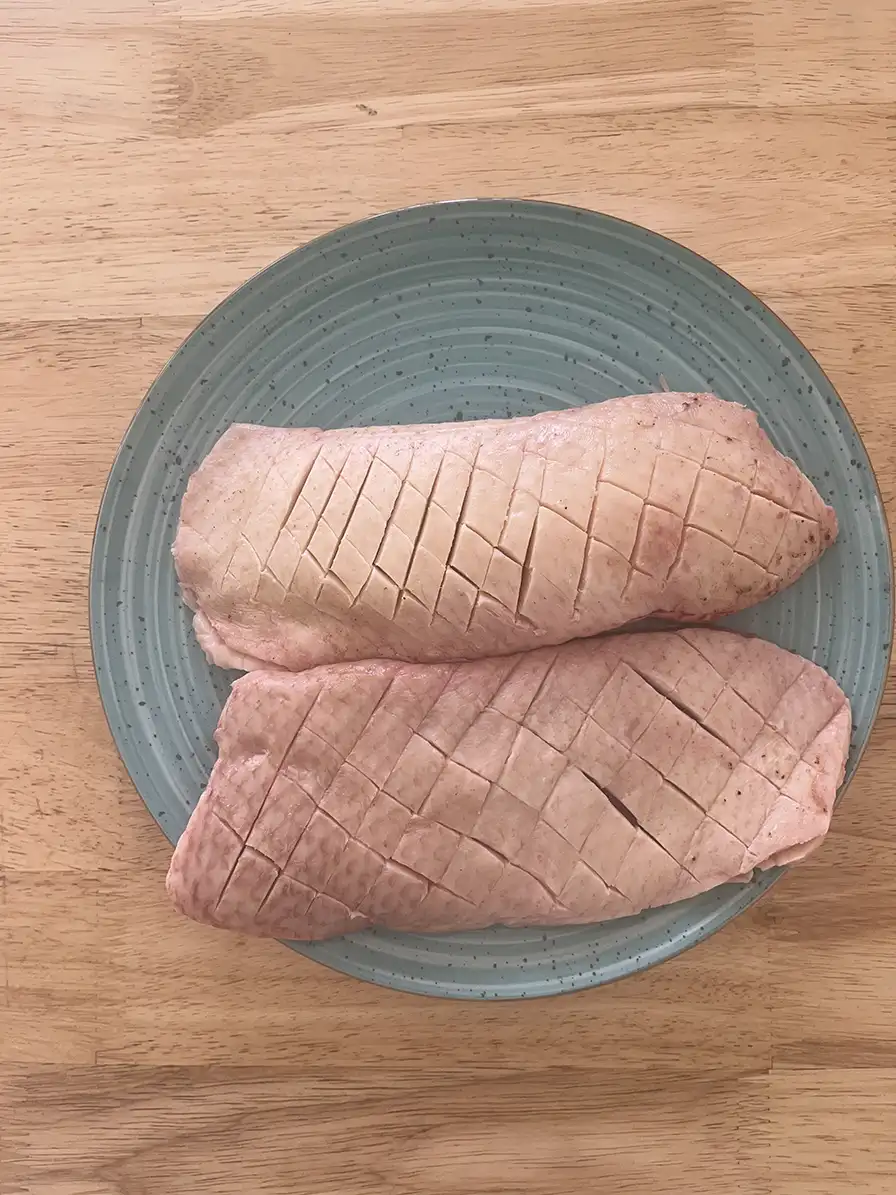

Season your scored breast generously with kosher salt and pepper, then let it sit in the fridge uncovered for a half hour: After the half hour, remove it form the fridge and pat it dry again.

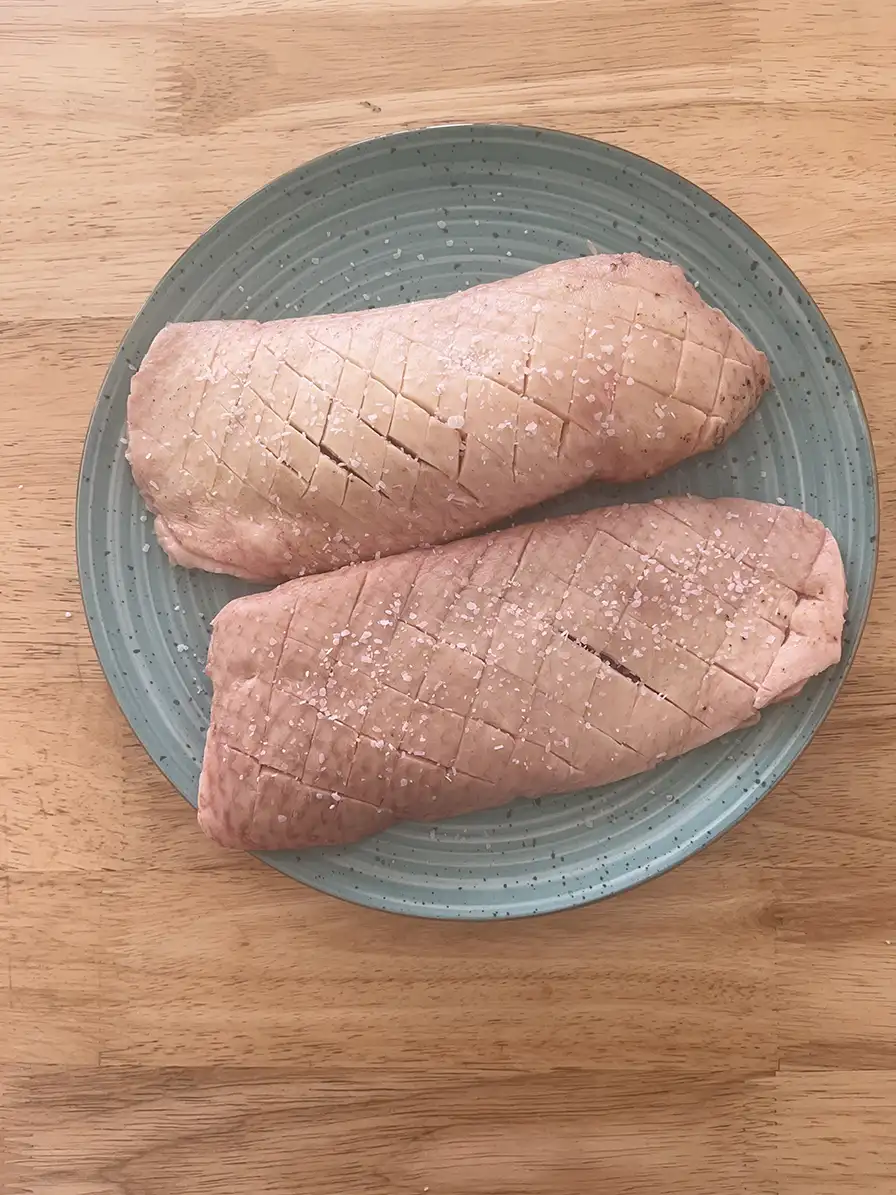

Place your duck breasts in a cold pan, fat side down, then turn on the heat to a medium-low temperature.
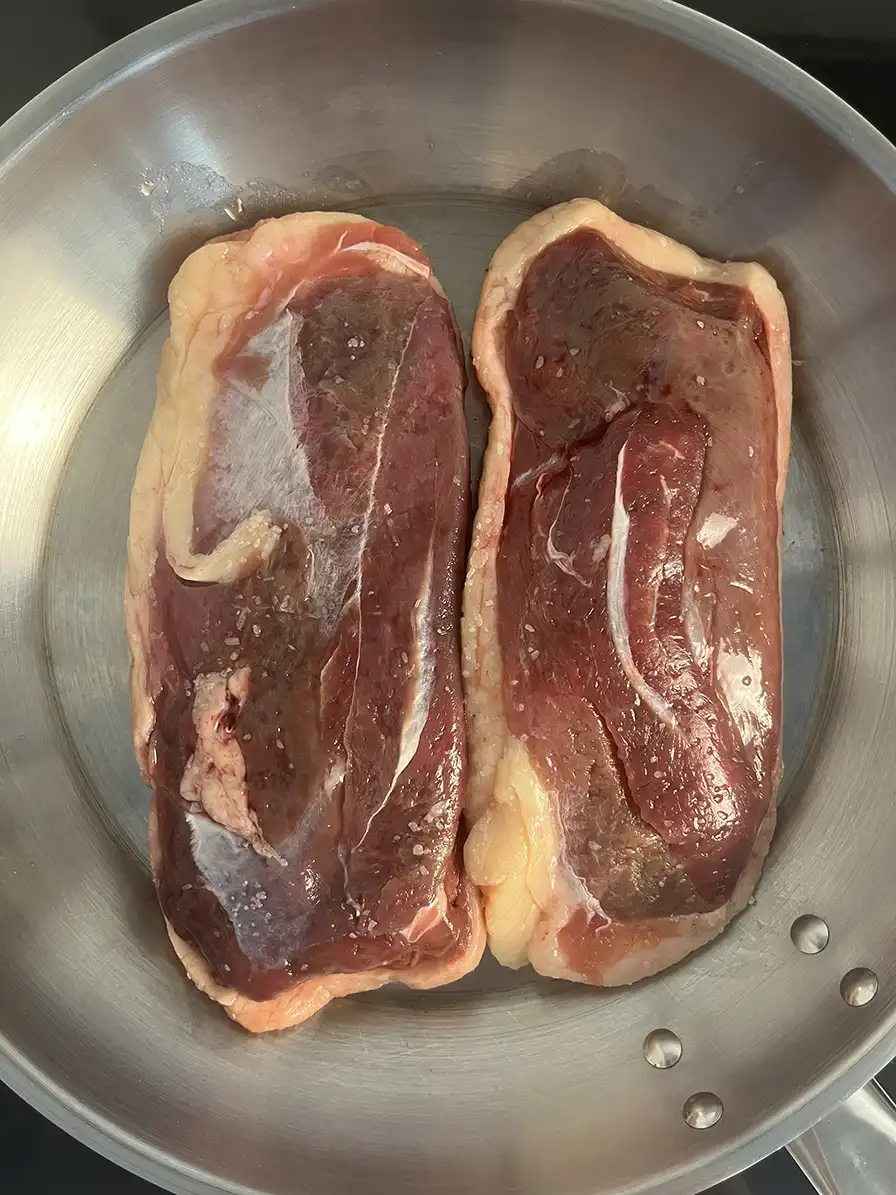
Cook the breasts until most of their fat has rendered into the pan, and a golden crust as formed on the fat cap (about 15 minutes). You may have to remove some fat from the pan as you go. Reserve the fat for both a later step in the recipe, and for later cooking in general - duck fat is divine.
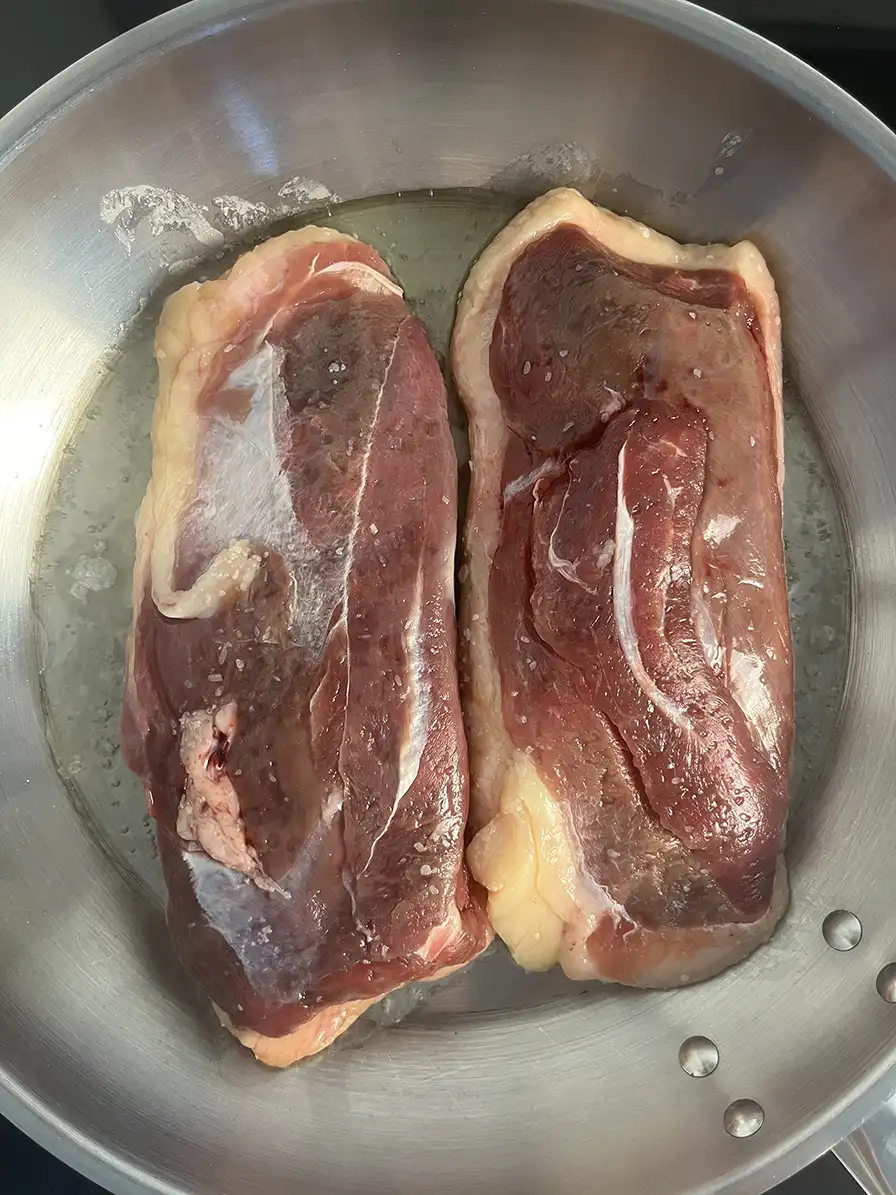
Flip the duck breasts, and keep cooking, using a temperature probe to monitor the internal temperature. Cook the breasts until they hit 140°F.
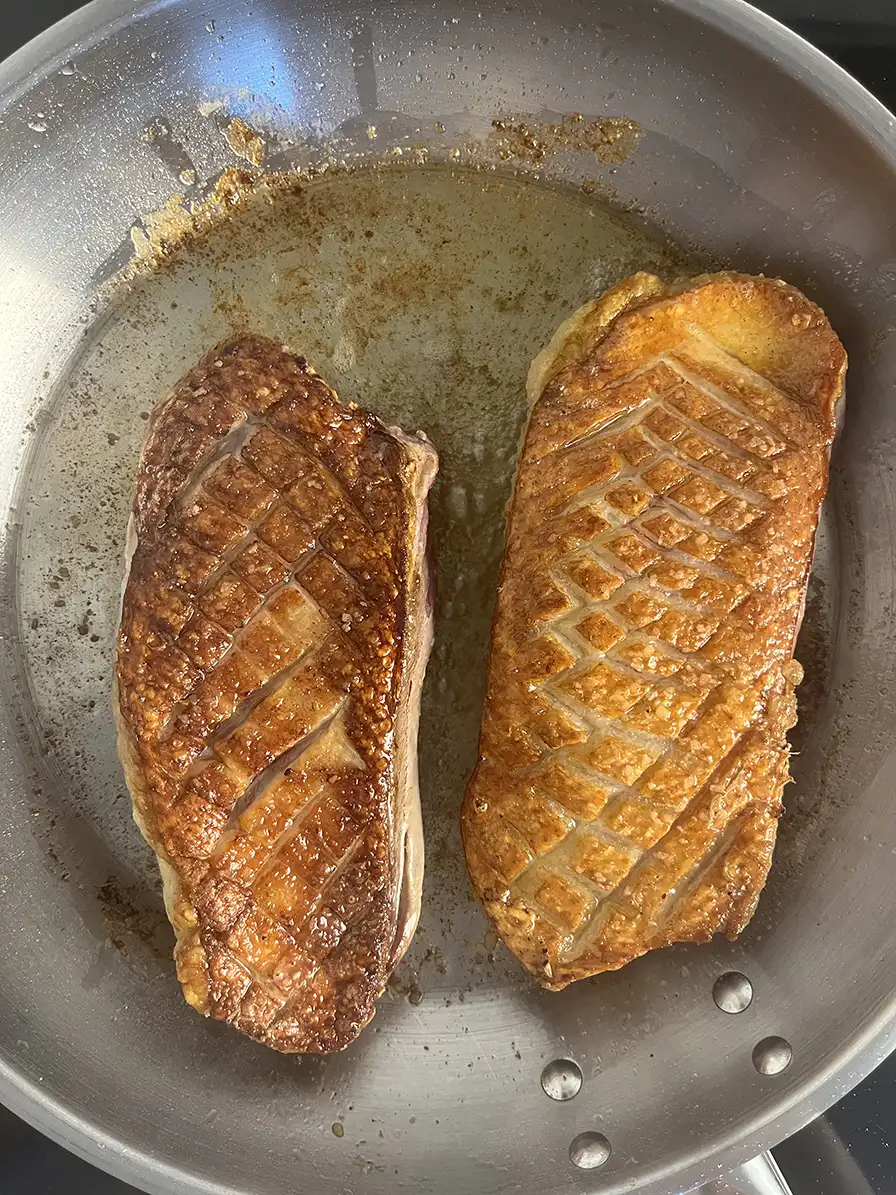
Remove the duck from the pan so it can rest while we get saucy.
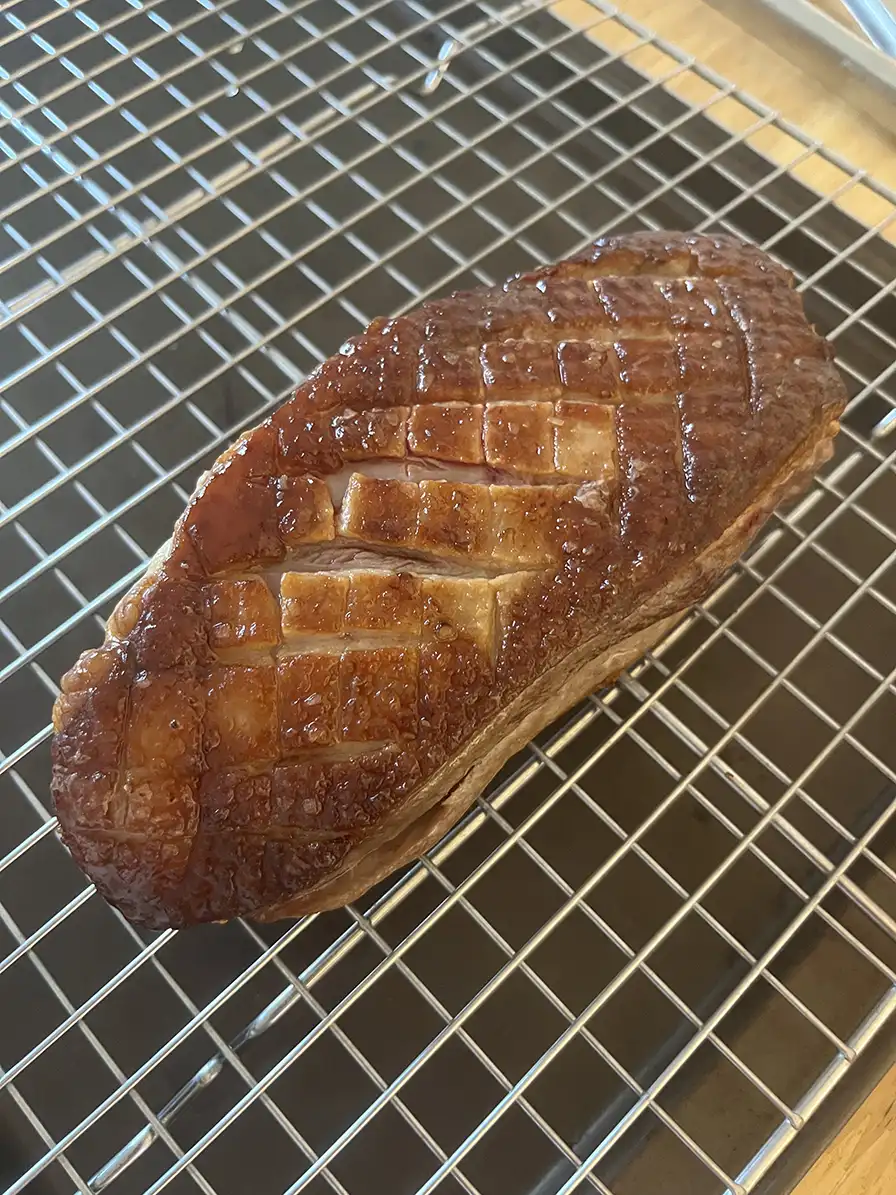
Make the Sauce and Serve
Remove all but a couple tablespoons of fat from the pan, and add your garlic, sage, and orange zest to the pan: sauté until fragrant.
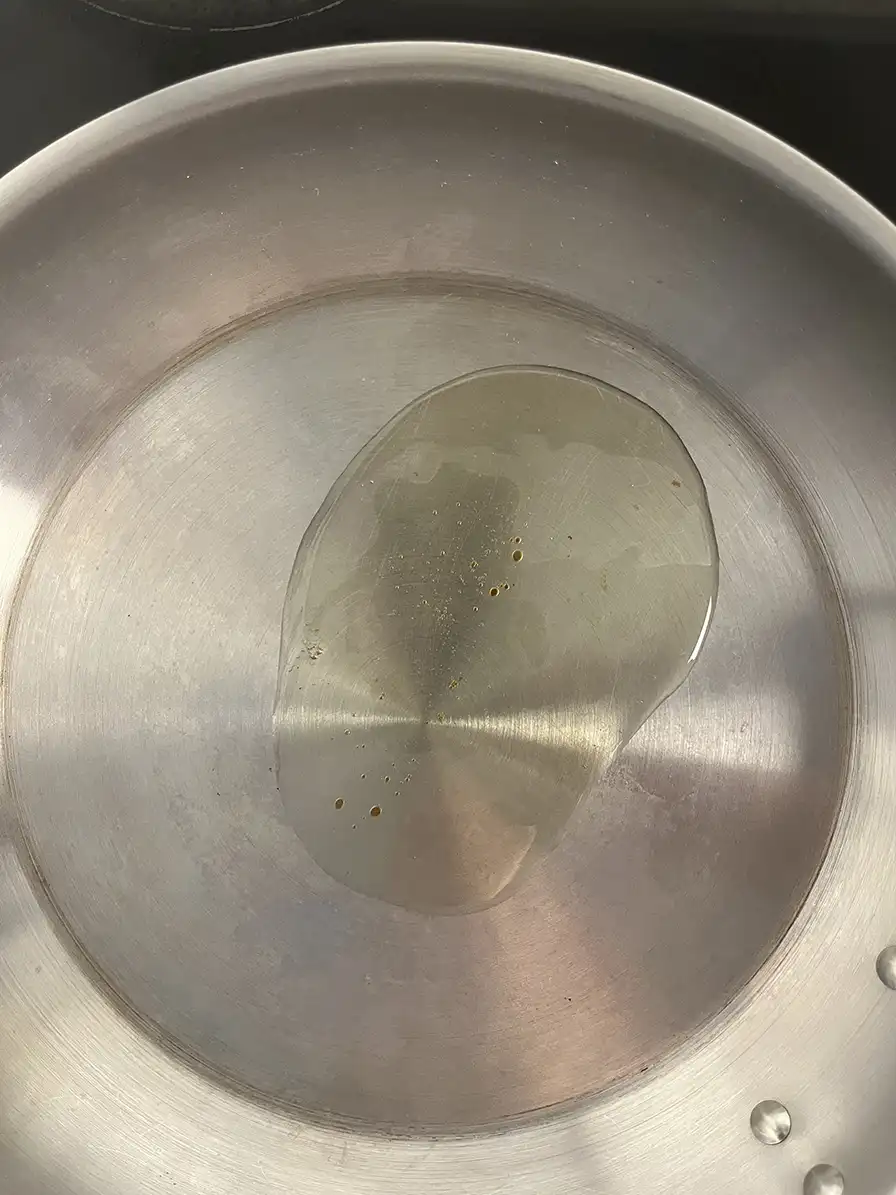
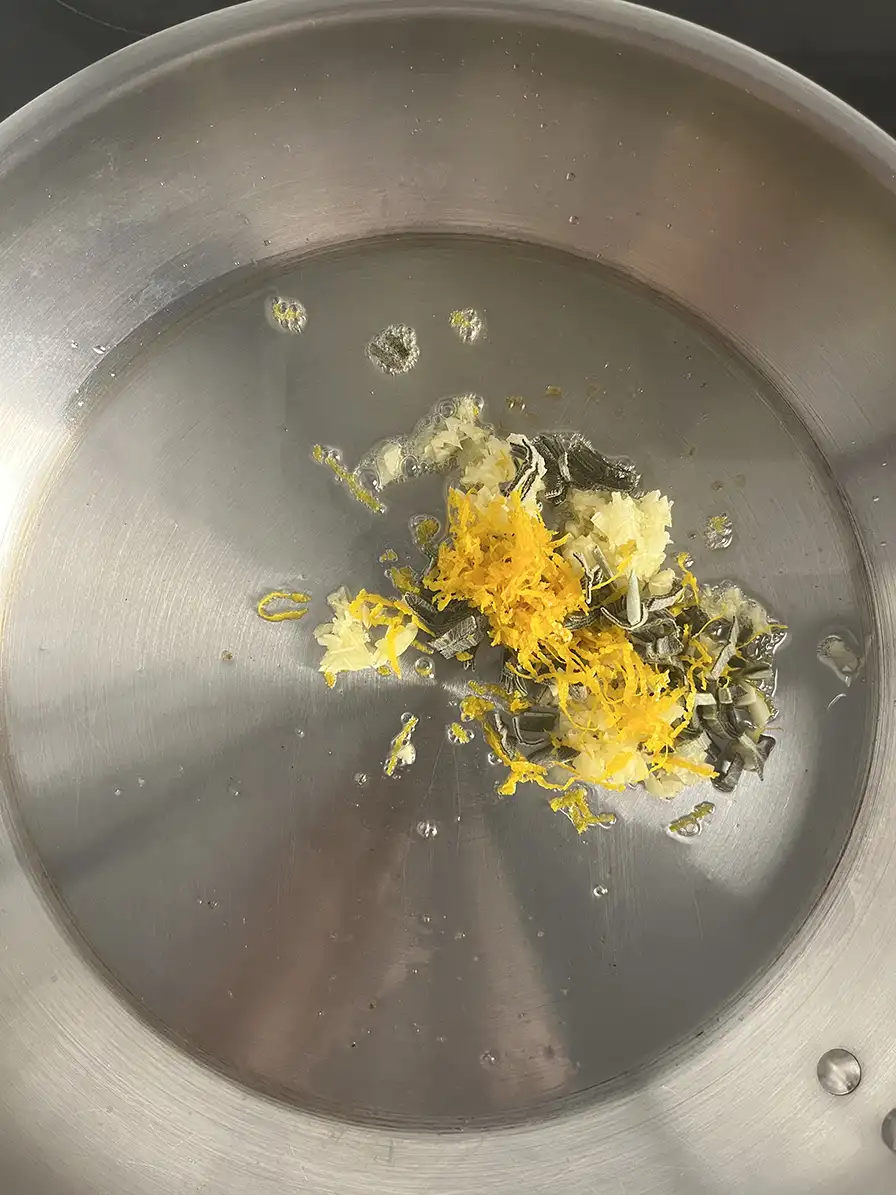
Deglaze the pan with brandy, and allow the alcohol to cook off for a couple minutes. Add in your orange juice and cranberries and saute until the berries have cooked down into a thick sauce. If the sauce is too thick, add a bit of water or broth to let it down.
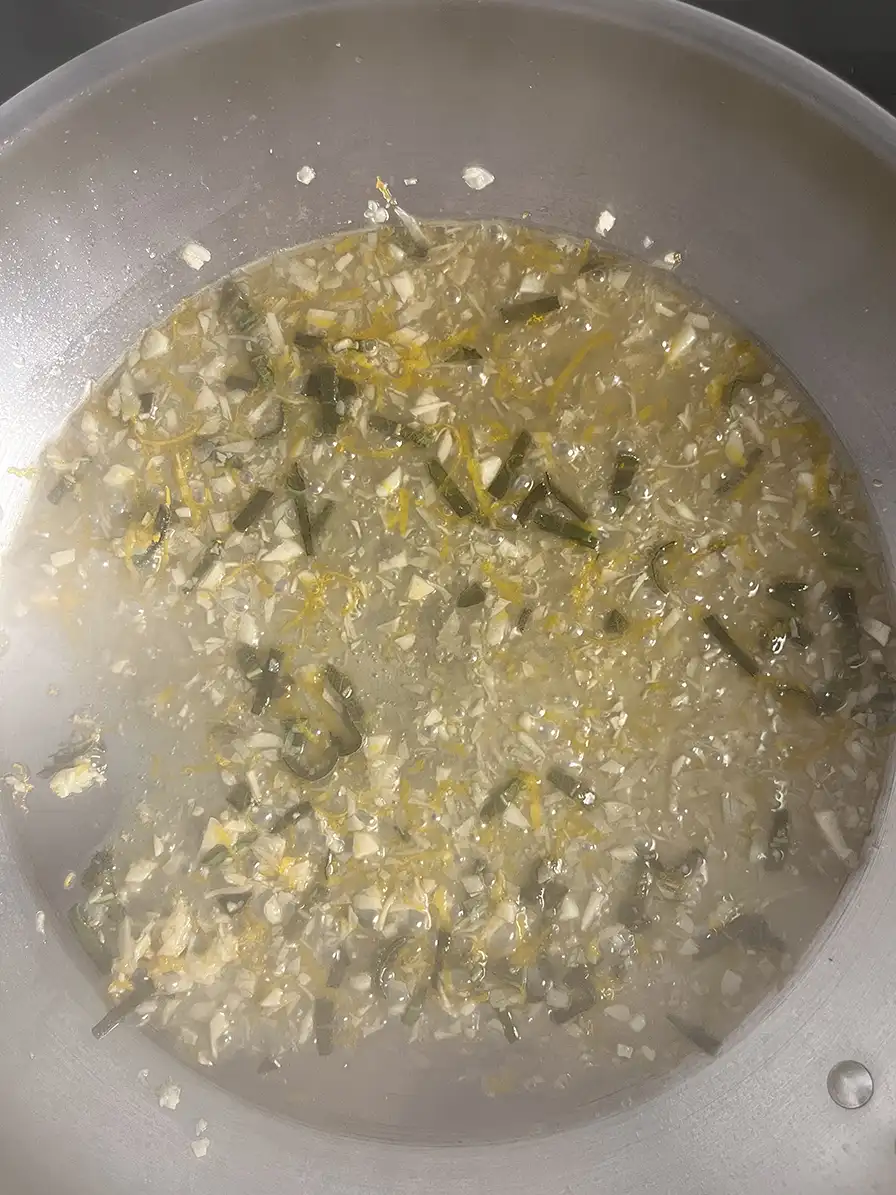
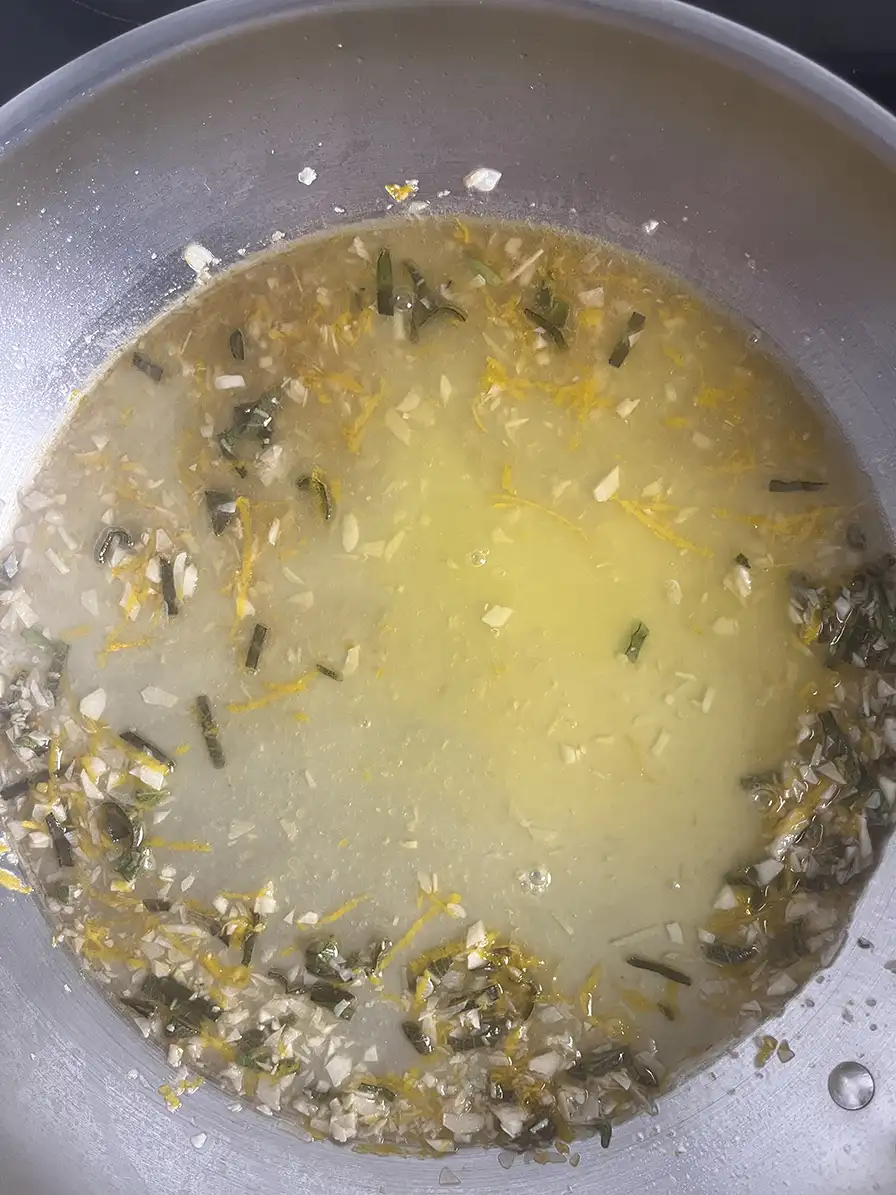
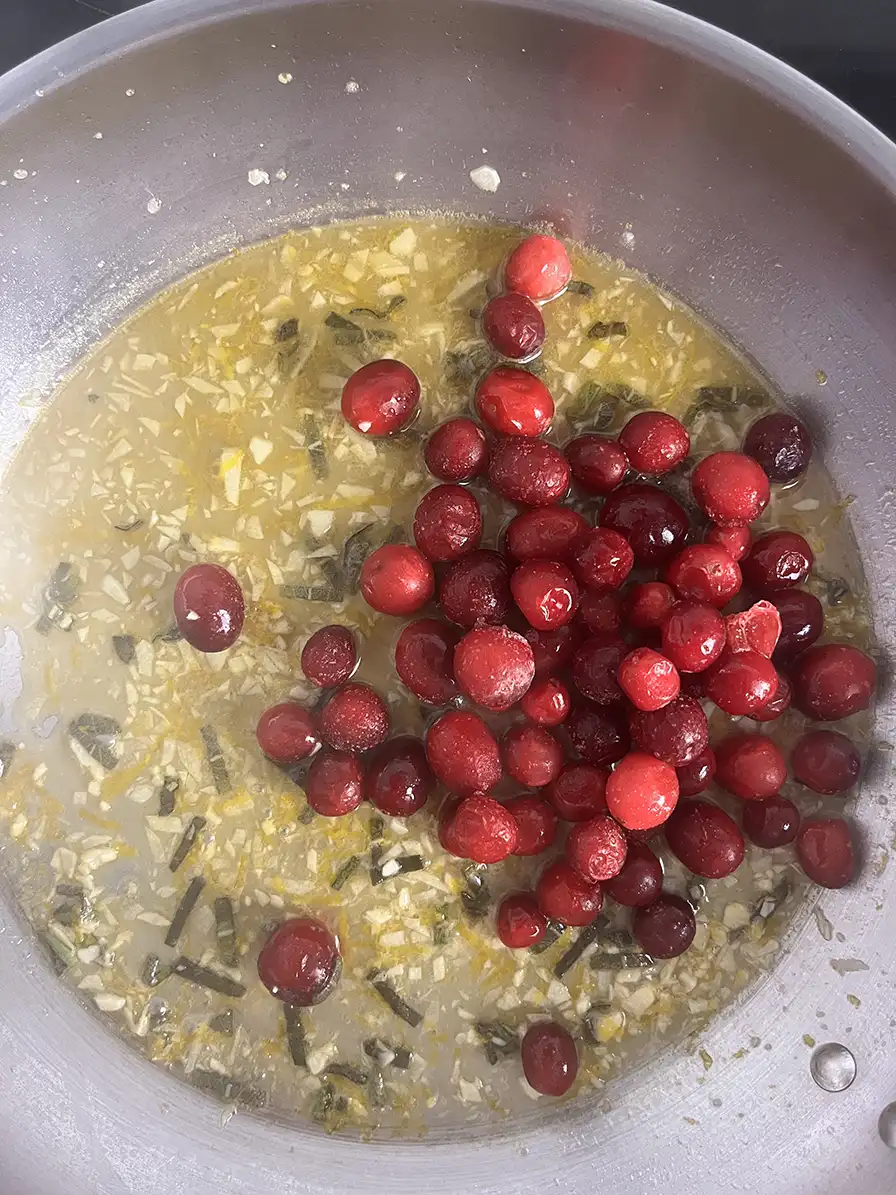
Season the sauce to taste with salt and pepper, and remove from heat. If you want the sauce smoother, blend it with an immersion blender before serving.
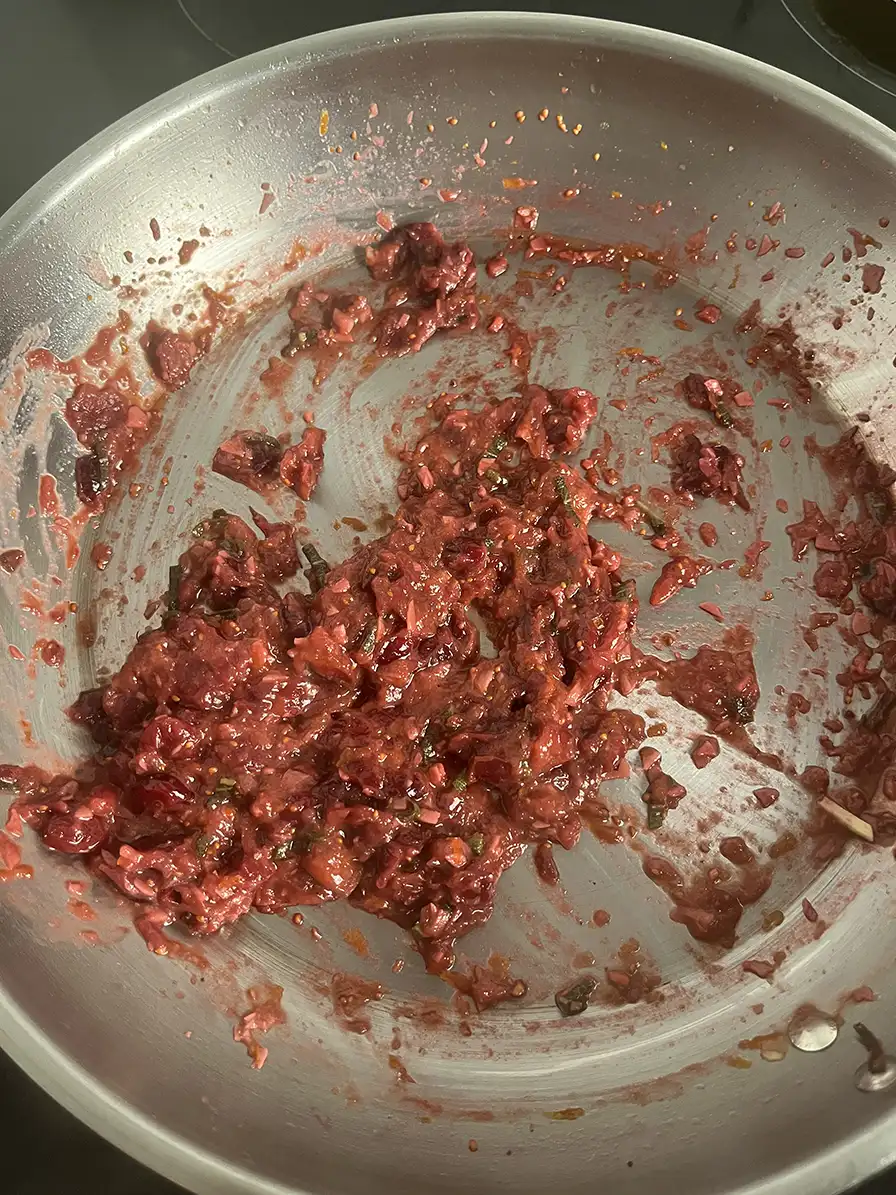
Take your fully rested duck breast, and slice it with a very sharp knife. Serve with the sauce, a vegetable, and a starch.
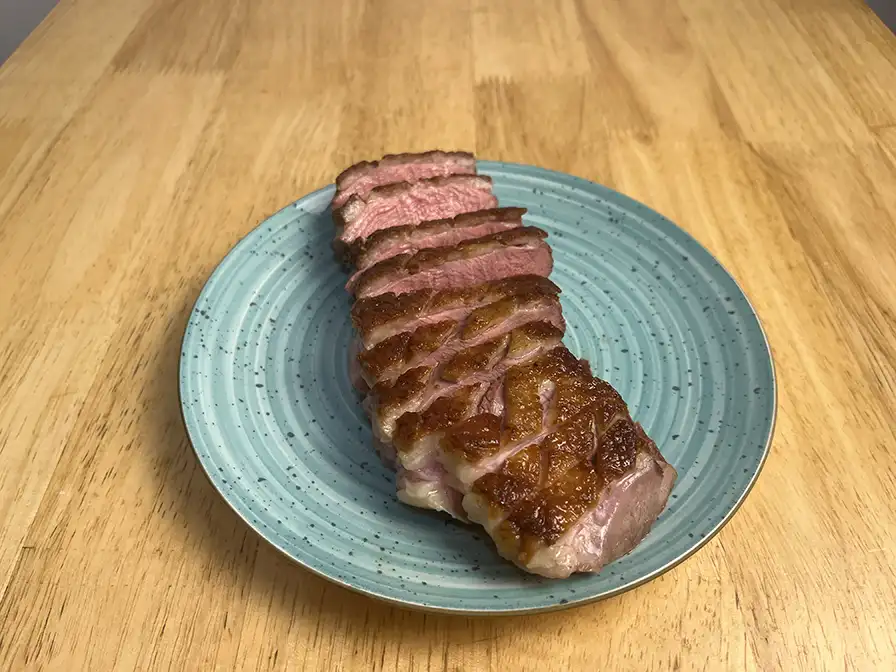

Pan-Seared Duck Breast with Cranberry Sauce
- 2 duck breasts
- 2 cloves garlic, minced
- 1/4 cup (60 ml) brandy
- 1.5 cup (165 g) cranberries
- 1 orange. juiced and zested
- 1 tbs fresh sage, chopped
- salt and pepper
- Knife
- Large pan
- Tongs
- Paper towel
- Pat the duck breasts dry with a paper towel, score the layer of fat with a knife.
- Season generously with salt and pepper and allow to sit uncovered in the fridge for at least 30 minutes. Remove from the fridge and pat dry again.
- Add the duck breasts to a cold pan, fat side down.
- Cook the duck breasts over medium-low heat until most of the fat has rendered into the pan and a golden crust has formed (about 15 minutes). You may have to remove fat as it renders.
- Flip the duck breasts and cook until they reach an internal temperature of 140°F.
- Remove the duck from the pan and allow to rest as you prepare the sauce.
- Remove some of the rendered fat from the pan, leaving about 2 tablespoons.
- Add the garlic, orange zest, and sage to the pan and sauté until fragrant (1 minute).
- Deglaze the pan with the brandy and allow some of the alcohol to cook off (2 minutes).
- Add the orange juice and cranberries to the pan and sauté until the cranberries have cooked down into a thick sauce (about 10 minutes). If you find you need more liquid, add some stock or water to the pan as the cranberries cook.
- Season to taste with salt and pepper and remove from heat. If you prefer a smooth sauce, blend with an immersion blender before serving.
- Slice the duck breast and serve on top of the cranberry sauce.
